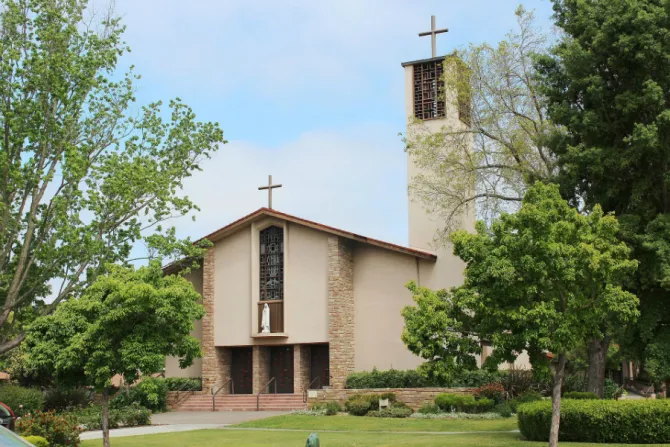Denver, Colo., Mar 14, 2023 / 09:47 am
The Catholic Diocese of Santa Rosa in northern California said on Monday that it will file for bankruptcy, citing the number of child sexual abuse lawsuits filed against it in the last three years. Many alleged abuse incidents are more than three decades old.
“While I have been anticipating this action for more than a full year, it is most distressing to have the duty of actually proceeding with this filing,” Bishop Robert F. Vasa said in a March 10 statement. “Nevertheless, I remain convinced that it is a necessary step for the diocese and the only way to resolve the claims which have been presented against it.”
In December 2022 the diocese announced plans to declare Chapter 11 bankruptcy following “careful and prayerful consideration” and seeking the advice of priests, the diocesan finance council, and professional counsel. Santa Rosa serves about 180,000 Catholics among about 950,000 residents, according to figures on the diocesan website. By population, it is California’s smallest Catholic diocese, with 41 parishes and 22 missions.
The State of California passed legislation allowing a three-year exemption to the statute of limitations on sexual abuse lawsuits. The window began Jan. 1, 2020, and ended Jan. 2, 2023.
A similar legal window was opened in 2003, but it did not allow for retrospective lawsuits against hospitals and schools where abuse was alleged.
“These cases are too numerous to settle individually and so they have accumulated until the closing of the three-year window,” Vasa said. “Now that the window is closed, we have received notice of at least 160 claims and we have information that perhaps more than 200 claims have been filed in total against the diocese.”
More than 115 cases date back more than 30 years, Vasa said. According to a diocesan question-and-answer briefing paper, some of the lawsuits involve alleged incidents from more than 60 years ago.
The bishop emphasized Catholic child protection and safe environment efforts in the last 20 years have sought to prevent abuse. All employees and volunteers now face background screenings.
The bishop said it is the diocese’s prayer “that children are actually kept safer now than in the past and that all in our pews are more aware and vigilant about potential risks.”
“Nevertheless, we are deeply saddened that so many have endured abuse in the past and that the scourge of child sexual abuse is a part of our diocesan history. The present action of the diocese is necessary and through this process we hope to provide for those who have come forward and who are yet to come forward at least some compensation for the harms they have endured.”
The Santa Rosa Diocese has about 200,000 Catholics out of a population of close to 1 million.
In 2003, the Santa Rosa Diocese faced “similar circumstances” but “many fewer cases.”
The diocese sold property, borrowed money, and paid about $12 million in settlements, with another $19 million from insurance. Since 2003, it has spent another $4 million in individual settlements.
“Now, facing at least 160 new cases, with excess property depleted, with insurance for many of the years either nonexistent or exhausted it is impossible to see any way forward without recourse to the bankruptcy protections our country makes available.”
Filing for bankruptcy will provide “a process to carefully evaluate and compensate, as fairly as possible, those who have come forward with allegations of sexual abuse.” It will allow all parties to resolve their claims under the bankruptcy court’s supervision, and the diocese may deal with these issues collectively rather than one by one.
“At the same time, the process provides a way for the diocese to continue the various charitable ministries in which it is engaged,” he said.
(Story continues below)
Bishop Vasa said only the diocese’s “corporation sole” known as the Roman Catholic Bishop of Santa Rosa is filing for bankruptcy. Parishes and schools are separate civil corporations or ecclesial entities and “should not be parties to this filing.”
The bankruptcy proceedings will determine whether any parish and school entities will take part in the process, he said.
The diocese provided a question-and-answer briefing that addressed several questions, including whether parishes or schools will be forced to close because of the bankruptcy process. The diocese noted that creditors have challenged the separate corporate status of Catholic parishes or schools in other dioceses’ filings.
“That is why our pastors and other religious entities of the diocese have sought independent legal counsel to represent parish interests in this process.”
The diocese noted that the Legislature could again change the law to create more “look-back windows” for lawsuits or eliminate statutes of limitations entirely. The most recent changes now allow an abuse victim to sue by the age of 40 years or five years after they realized the abuse caused harm to them. Previously, the statute of limitations barred lawsuits after the victim turned 28 years old.
A bankruptcy reorganization protects against any lawsuits in the future, it said.
“It is the only way to get all of the claimants to the table at once and negotiate an agreement that works for all parties,” the diocese said.
“A thorough process is required, and will be undertaken, to notify the public of this action and to assure that any survivors of child sexual assault have an opportunity to file claims.”
In February, Cardinal Robert McElroy of San Diego announced that his diocese could have to resort to a declaration of bankruptcy in 2023 to manage the cost of hundreds of new abuse claims.
More than two dozen U.S. dioceses, including two in U.S. overseas territories, have entered into bankruptcy proceedings, the vast majority in the past decade. California’s Diocese of Stockton went through a three-year bankruptcy period from 2014 to 2017.



